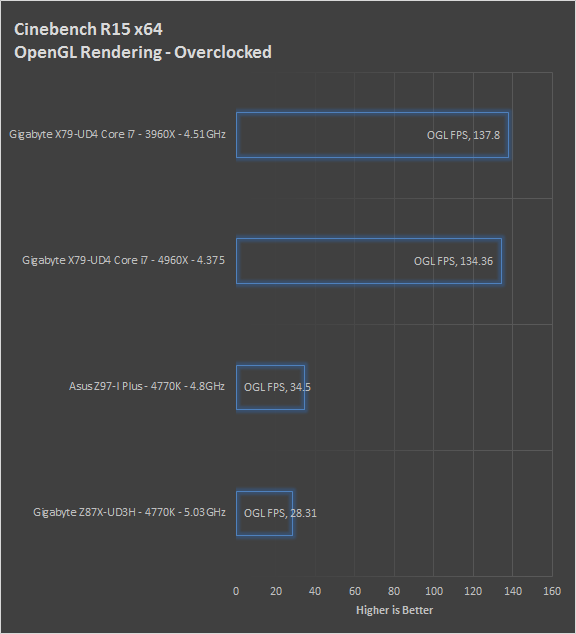Section II - Performance Tests, Synthetic
In this section of testing we cover the synthetics. These are tests that run a scripted sequence of internal APIs or that use another installed application to perform a series of scripted events. They are great in that they can provide reproducible results across various platforms. On the down side, synthetic tests can be fooled with driver tweaks and optimizations. In some cases it is necessary to rename the .exe file to something generic to discover if this is the case. In any event when this is needed (when a test shows a drastic difference in performance over the renamed exe) we will note this and show both results for comparison.
PCMark 8-
PCMark 8 is a little bit of a departure from PCMark 7. Although the application is still intended for benchmarking and does that quite well the methods used to obtain the results are different. Futuremark has decided to break the tests into usage models instead of performance types. Here we see the tests aligned to the home, work, content creation (creative) and storage functions. We ran all of our tests at baseline (no OpenCL acceleration) to get the feel of the motherboard and its ability to run these tests.
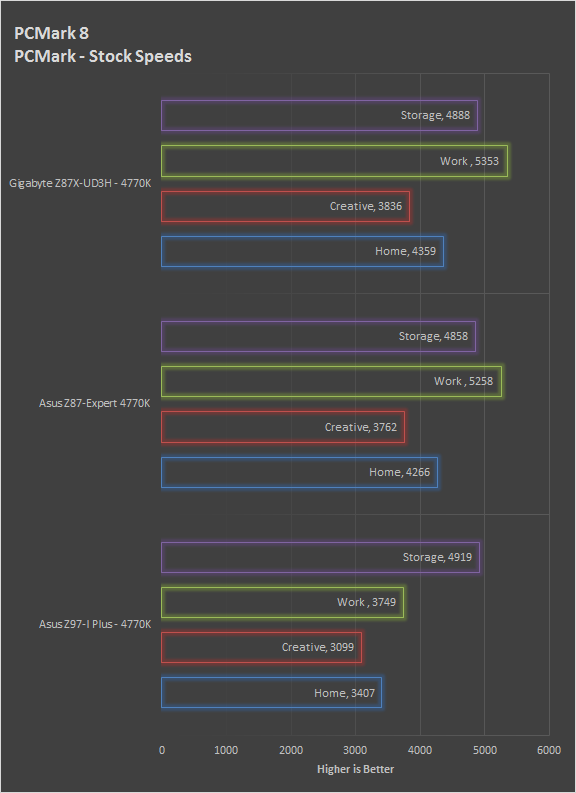
With the exception of the storage test the Z97I is well behind the two Z87 boards we have had in the lab recently. This is a little bit unusual when you think about it. The Z97 chipset is supposed to be much more efficient and should allow any Haswell CPU to perform at its best. In this instance that is just not the case.
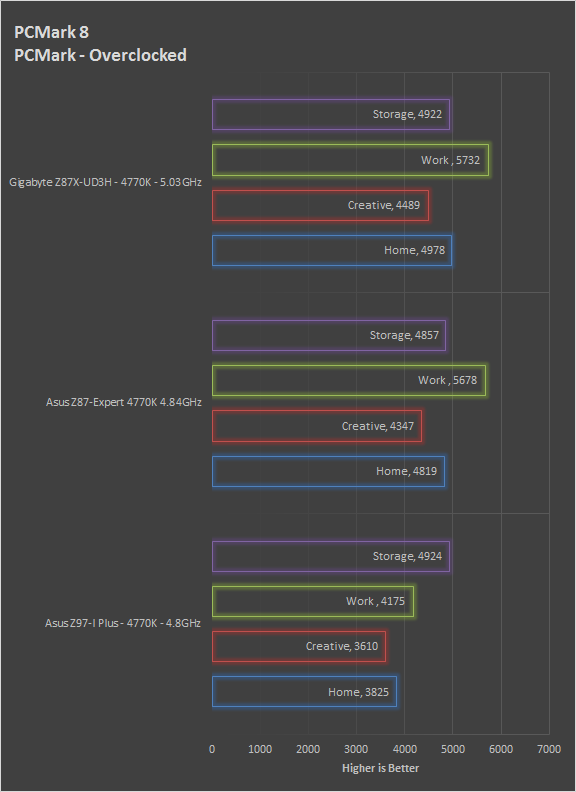
Even in our overclocking tests we see the Z97I Plus lag behind in PC Mark 8.
3DMark -
3DMark is the other Futuremark test that we run on our motherboards. This test simulates the typical tasks that a GPU (and system) would have to perform to provide you with a good gaming experience. It is based on the DX9, DX10 and DX11 engines but can only be installed on Windows Vista or later. The suite of tests covers DX9, DX10, and of course DX11 rendering; it also covers AI computations and physics. That’s right I said Physics the latest version of 3DMark uses a Havok physics engine. This removes the advantage that nVidia had with 3DMark Vantage.
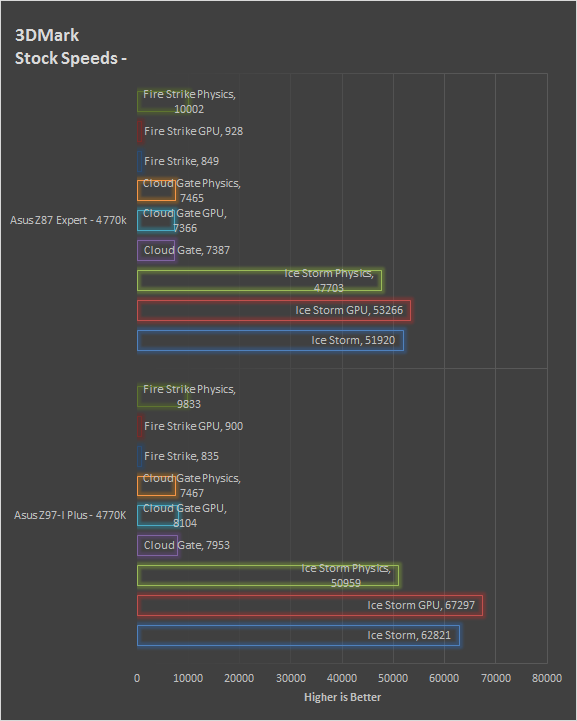 For 3DMark we find that the Z97I is still a little behind the others when you compare them using the Fire Strike bench. Looking at the other two (we did not drop in Sky Diver this time) we find numbers that look a little closer, but the Z97I Plus is still not out in front.
For 3DMark we find that the Z97I is still a little behind the others when you compare them using the Fire Strike bench. Looking at the other two (we did not drop in Sky Diver this time) we find numbers that look a little closer, but the Z97I Plus is still not out in front.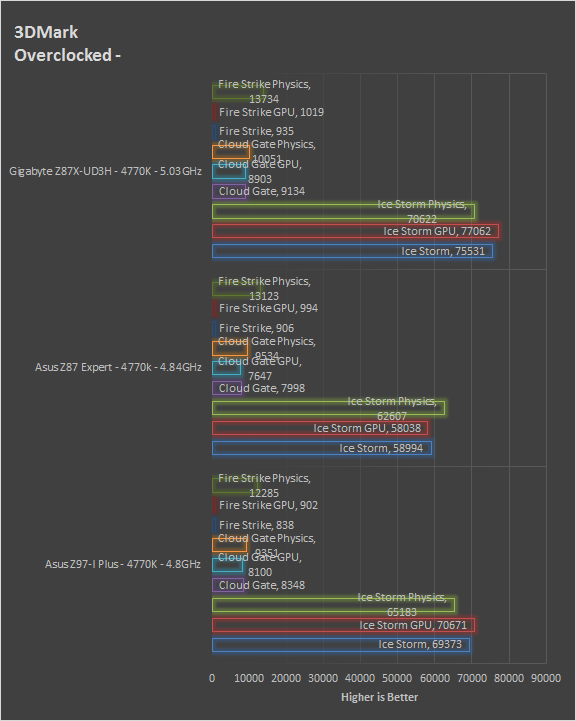
HyperPi 0.99b -
HyperPi is a front end application that allows you to easily run multiple instances of the SuperPi application. SuperPi, for those that are not familiar with it, is an application that measures the time it takes to calculate the number Pi out to as many as 32 million places. This calculation is then checked and run multiple times (up to 24 for a 32M run). This test stresses the CPU, Memory and HDD as data is handed off between the three. If there is a weak link, HyperPi will show it. For our testing we run the 32M test on as many cores (and threads) as the CPU has available. The slowest CPU time is then recorded. The blue bars indicate the slowest time while the red indicate the fastest.

At stock speeds the Z97I Plus is pretty fast, but it still finds itself behind the Z87 boards. Overclocked things slip quite a bit and the Z97I Plus drops way down in the group.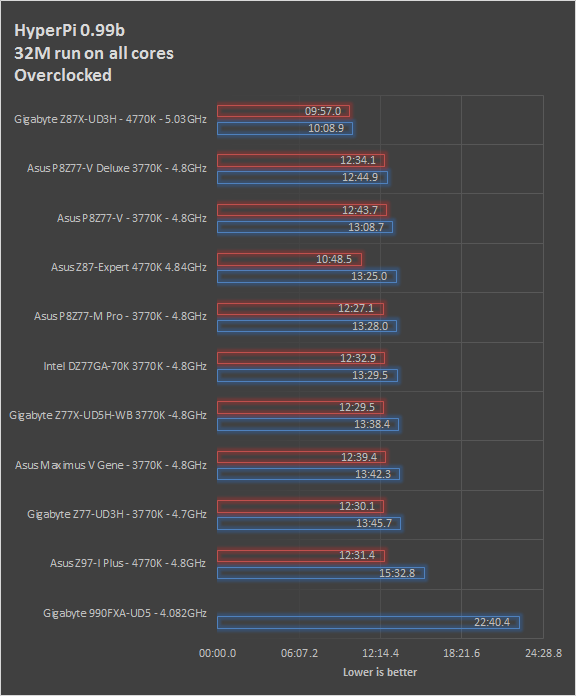
Cinebench R15 -
Cinebench R15 is the 15th release of Maxon’s rendering test. This test is based off of the Cinema 4D engine, which is one of the industry standard tools for digital animation. It is a powerful product with many different modules that can be “plugged” into it to increase its effectiveness. With Cinebench you get to see how your computer would do using this application. There are two tests; one tests the CPU’s ability to render an image across multiple cores or threads. The other tests your systems ability to handle OpenGL based rendering.
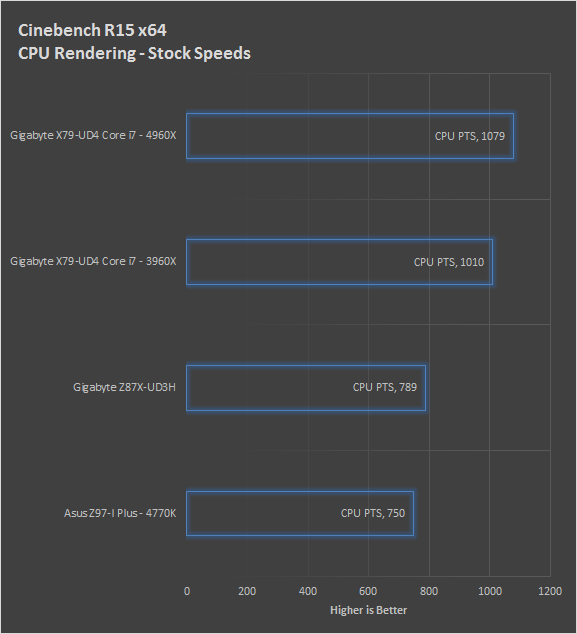
Under the CPU rendering tests in Cinebench R15 the Z97I Plus is at the bottom of the list. The gap is not that big, but it is enough to be outside of normal deviation.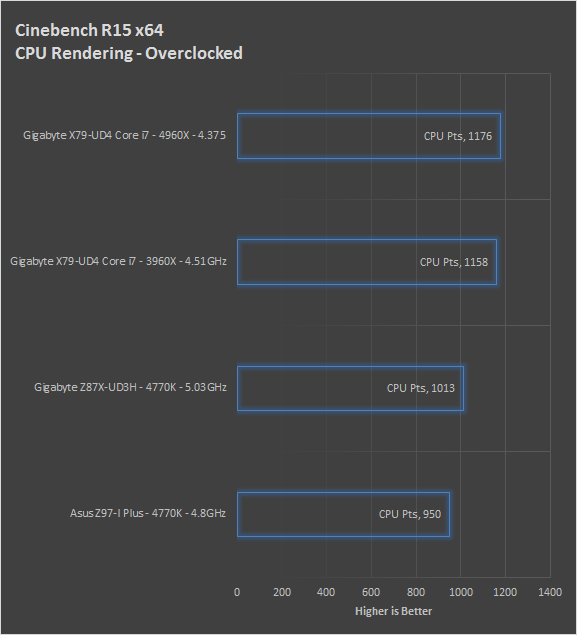

Under the OpenGL testing we find the Z97I Plus out in front of the Z87 boards. Granted it cannot keep up with the discrete GPUs we used on the X79 boards, but it still shows fairly solid performance for an internal GPU.